If you ask ten people in India which state has the best education, you’ll get ten different answers — and most of them have strong opinions to back it up. But let’s cut through the noise and look at what really counts: exam results, actual teaching quality, and what kids take away from school. When it comes to the CBSE syllabus, there’s a wild mix from state to state. Some states brag about their board toppers, while others focus on getting nearly every student to pass — and both styles come with their own strengths.
You might think the answer is obvious, maybe Kerala because of its old reputation, or Delhi because of its huge network of CBSE schools. But the real answer depends on what you value more: sky-high averages, creative learning, strong English, or just less exam stress. Each state’s system pushes students in different ways. It’s easy to assume there’s one clear winner, but the truth is messier — and there’s a lot to learn if you’re a student or a parent figuring out where your future could shine brightest under CBSE.
- Education Rankings: The Basics
- CBSE Results: What the Numbers Say
- Standout States and Why They Shine
- Inside the Classrooms: What Teachers and Students Do Differently
- Hidden Factors You Won’t See in the Scorecards
- Tips for Parents and Students Choosing a State
Education Rankings: The Basics
Let’s set the record straight on how states stack up across India when it comes to education, especially under the best education state India debate. Global and national surveys don’t always agree with each other, but most take into account clear stuff—like pass percentages, dropout rates, and infrastructure (like labs and libraries). The CBSE doesn’t release an official state ranking, but each year CBSE exam data gives some big clues about state performance under the CBSE syllabus.
For example, when the results for Class 10 and 12 drop, you’ll notice some states crowd the top of the charts. Delhi, Chandigarh, and Kerala often show up with sky-high pass rates, sometimes going above 97%. Here’s what matters most for these rankings:
- CBSE Results: State-wise pass percentages for both Class 10 and 12 boards.
- Quality of Schools: Number of CBSE-affiliated schools per state, plus student-teacher ratio.
- Resources: Availability of science labs, libraries, and teacher training.
- Dropout Rates: How many students actually stay in school until 12th grade?
- Access: Urban vs. rural reach—does every kid get a shot, or only those in big cities?
To give you a quick comparison, check out this real snippet of 2024 CBSE pass percentages for Class 12 from a few top performers:
| State/UT | Class 12 Pass % (2024) |
|---|---|
| Trivandrum (Kerala region) | 99.91 |
| Delhi | 94.25 |
| Chennai | 97.85 |
| Bengaluru | 96.56 |
But numbers aren’t the whole story. The factors above mix together in every state, so while one state might have more toppers, another might be better at making sure no one gets left behind. If you’re choosing a place for education, you need to look beyond just marks and dig into what fits your needs best.
CBSE Results: What the Numbers Say
If you're comparing best education state India under the CBSE syllabus, nothing speaks louder than actual board results. These numbers are fresh and straightforward—no guessing, just data you can use.
Take a look at the most recent CBSE Class 12 pass percentages. Delhi, Chandigarh, and Kerala tend to grab the top spots year after year. In 2024, Delhi schools (including private and government) showed nearly 95% pass rate, a solid track record. Chennai region—which covers parts of Tamil Nadu and Andhra Pradesh—wasn’t far behind. Kerala isn’t just coasting on its reputation; it consistently lands in the top three for both pass rates and the number of students scoring above 90%.
| State/Region | 2024 Pass % (Class 12) | Students Above 90% |
|---|---|---|
| Delhi | 95% | 15,200+ |
| Kerala | 94.2% | 9,500+ |
| Chennai Region | 93.8% | 7,800+ |
| Chandigarh | 93.4% | 3,000+ |
One cool thing is how different states seem to have their own strengths. For example, Delhi knocks it out of the park in Science and Commerce streams, while Kerala’s top numbers often come from Humanities and high English scores. Some smaller states, like Goa and Himachal Pradesh, surprise you with their tight, focused teaching—smaller batches mean more attention from teachers, which helps push those numbers up.
But don’t just look at percentages. The real story is in the consistency. States like Tamil Nadu and Maharashtra have huge populations and still manage to keep pass rates above 90%, which is no small feat. It shows they’re not just focused on the toppers, but most kids are getting across the finish line.
Bottom line, results aren’t just a bragging point—they shape how parents and students choose schools and plan their futures. So, always check both the pass rate and the number of students excelling, not just the headlines. That’s the smart way to compare CBSE states if you care about education quality and real results.
Standout States and Why They Shine
If you look at the best education state India debate, three names pop up again and again: Delhi, Kerala, and Tamil Nadu. Their CBSE records and school setups just leave others scrambling to keep up, but each state has its own flavor. Let’s check out why these places stand out on the CBSE scoreboard and in the lives of their students.
Delhi is famous for its CBSE schools and crazy-high pass percentages. You’ll find more than 2,000 CBSE-affiliated schools here, with most clocking pass rates above 90%. In 2023, Delhi’s CBSE Class 12 pass percentage was 87.5%, one of the highest among the metros. Plus, students get tons of extracurriculars from tech labs to theatre, which gives them a real edge for competitive exams and college life.
Kerala still holds up its rep for education, and the numbers prove it. Even though the state leans more toward its own board, its CBSE schools punch above their weight. Teachers here often go the extra mile – lots of parent meetings and smart use of digital tools. The English and science results in Kerala CBSE schools are consistently strong. If you’re into holistic learning, this state gives a solid balance between marks and real-world skills.
Tamil Nadu stands out for making things accessible, with CBSE schools across big cities and small towns alike. Their numbers are solid – in 2023, nearly 95% pass rate in CBSE Class 10 exams. Tamil Nadu’s push for teacher training and focus on STEM has paid off. Plus, the state is known for prepping kids for national-level tests like JEE and NEET.
| State | CBSE Class 12 Pass % (2023) | Special Strength |
|---|---|---|
| Delhi | 87.5% | Extracurriculars, college prep |
| Kerala | 85.4% | Balanced learning, English/science |
| Tamil Nadu | 84.9% | STEM & exam coaching |
Other states have bright spots too. Maharashtra’s big cities run strong CBSE schools with great results, and Karnataka is known for its education hubs in Bangalore. But Kerala, Delhi, and Tamil Nadu are usually the names you hear first from parents and teachers chasing top schools. If you’re picking a state, check what fits your style — some places are all-in on academics, others care about all-round development. That’s what really makes a state shine under the CBSE syllabus and gives kids that extra push.
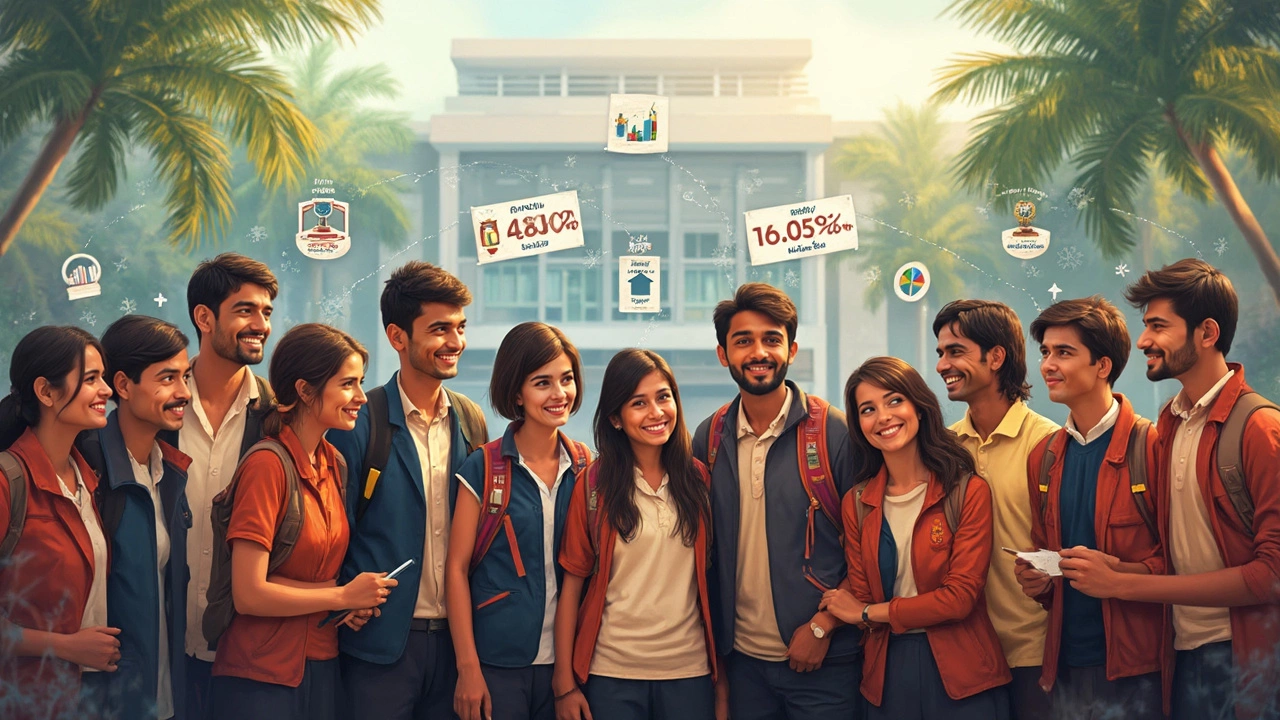
Inside the Classrooms: What Teachers and Students Do Differently
The big difference between states isn’t just about money or fancy buildings—it’s how teachers actually teach, and how students go about learning. Walk into a top CBSE syllabus school in Delhi and you’ll notice a heavy push on project work and technology in class. Smart boards are common. Teachers use videos and interactive quizzes, not just chalk and blackboard. Students in Delhi tend to ask a lot of questions, and there’s a bit of competition over test scores.
In Kerala, there’s a serious focus on basic concepts. It’s not just about memorizing; teachers ask students to explain things in their own words. Peer learning (students helping other students) is super common. State teacher training programs actually include how to handle mixed-ability students—so you’ll see the brighter kids helping others in real time, right there in the classroom.
Tamil Nadu stands out for its discipline and packed routines. Homework is regular, class tests happen every week, and teachers follow a tight schedule. But here’s the secret: in CBSE schools, teachers are encouraged to connect textbook lessons with daily life. In practical science classes, for example, teachers don’t just show experiments—they get students to run them, even in groups. That hands-on learning really sticks.
| State | Teaching Style | Classroom Trends |
|---|---|---|
| Delhi | Tech-driven, project-based, student questions encouraged | High use of digital tools, competitive test prep |
| Kerala | Concept-focused, peer learning, flexible methods | Group activities, emphasis on basics |
| Tamil Nadu | Routine-based, hands-on labs, discipline | Frequent class tests, textbook-to-life links |
One cool thing: some CBSE schools in big cities run doubt-clearing sessions after school just for students who need that extra push. It’s not just for kids who are struggling—top performers show up too, aiming to get every mark possible. You’ll see teachers adapting to mixed backgrounds, especially in metro schools where students come from all over India.
Parents sometimes wonder how teachers handle such different needs under the CBSE syllabus. The short answer? Flexibility. Good teachers blend tech, group work, and old-school drills. The best mix depends on the crowd in a particular state, but this hands-on, interactive way of learning is what really separates those leading states from the rest.
Hidden Factors You Won’t See in the Scorecards
When everyone talks about the best education state India based on CBSE results, the focus is usually on marks. But loads of game-changing stuff doesn’t show up in state rankings or board statistics. These include things like after-school support, school commute time, language comfort, technology use, and family pressure. Let’s pull back the curtain on the invisible side of school success.
First, access to after-school tuition or coaching centers makes a massive difference. In metro cities like Delhi and Mumbai, it’s normal for students to attend extra coaching classes almost every day. Smaller towns in Tamil Nadu and Kerala might not have the same options, which changes how much help a student can get outside the classroom. Does that make board results completely fair? Not really.
Next, don’t underestimate the power of language. For many, English is the medium for the CBSE syllabus, but if you’re not comfortable in English, following along can get tricky fast. Students in states where English training starts early (think Delhi NCR) do have a head start, compared to rural areas in H.P., West Bengal, or the Northeast where Hindi or the local language is the main medium at home. This gap often doesn’t show up in result sheets, but it decides how confident a kid feels in exams.
Now, the commute. You’ll find stories of students in remote districts of Assam or Uttarakhand who walk several kilometres just to reach a CBSE school. For them, energy used on the road is energy lost for study. Meanwhile, school buses or nearby campuses in cities let students save that time and effort for homework or activities. These factors don’t impact board marks directly, but they quietly change the daily reality for students.
Family environment plays a big role too. If your parents can help with math doubts or have time to check your homework, your chances go up. This is more common in urban families where parents are themselves CBSE passouts, less so in villages where parents may not have formal education.
Another thing: some states invest more in teacher training and classroom tech. Haryana upgraded thousands of CBSE classrooms with smart boards in 2023, while parts of Bihar are still waiting for stable WiFi. One isn’t necessarily better, but digital resources can open up new ways of learning and make a student’s life easier—especially after the pandemic.
| State | Avg. Tuition/Coaching Access (%) | Smart Classroom Use (%) | Avg. Commute (km) |
|---|---|---|---|
| Delhi NCR | 74 | 83 | 2.1 |
| Tamil Nadu | 54 | 67 | 3.4 |
| Kerala | 48 | 52 | 3.7 |
| West Bengal | 41 | 43 | 5.2 |
As Professor R. Sharma of NCERT put it,
“Exam results get talked about the most, but what really gives students an edge are things like stable internet, peer support, and teachers who use new tools. These don’t show up in scorecards, but they’re deal-breakers.”
So if you’re comparing states for education quality, take the official results with a pinch of salt. Real-life conditions matter just as much as marks—sometimes more. Parents and students should always think about what’s happening behind the curtain, not just what’s printed on the certificate.
Tips for Parents and Students Choosing a State
Picking the right state for the best education state India experience—especially under the CBSE syllabus—isn’t just about board results or shiny brochures. There are a few things you should check before packing your bags or sending in any forms.
- Look Beyond Pass Percentages: Everyone goes on about board toppers and pass rates, but these numbers don’t always tell you about life in those schools. For example, Delhi public schools had around 94% pass rates in 2024, but they’re also known for extra-curriculars, sports, and clubs. Decide what matters more to you: all-round development or just exam results?
- Check Teacher Quality: States like Kerala and Tamil Nadu recruit teachers through strict tests and training, which explains their consistent results. Ask the school directly about teacher turnover and training.
- Compare Infrastructure: Notice if the schools have good libraries, labs, or digital classrooms. For example, in Chandigarh, almost every CBSE school has digital smart boards and computer labs, which really impact learning in practice.
- English Fluency and Communication: If you want an edge in English, check schools in Bengaluru or Hyderabad. Students there get exposure fast, as many families speak English at home and school debates or events are also usually in English.
- Student Stress Levels: Believe it or not, some places have less cut-throat competition. In Goa and parts of Maharashtra, students find the pressure lighter compared to Delhi or Kota. If your child thrives in a chilled environment, this is a big deal.
- Fees and Living Costs: Delhi and Mumbai CBSE schools can get pricey. State capitals in Kerala or Andhra Pradesh might be more affordable, even for high-ranked schools. Here’s a simple breakdown for 2024-25 annual average CBSE school fees:
| City/State | Average Annual Fees (INR) |
|---|---|
| Delhi | 1,20,000 |
| Mumbai | 1,40,000 |
| Kochi (Kerala) | 65,000 |
| Chennai | 85,000 |
| Hyderabad | 90,000 |
Keep in mind, top CBSE syllabus schools often have entrance tests or interviews, no matter which state you’re looking at. If you’re moving, reach out to local parent groups online—they’re usually upfront about schools, teachers, and management. And always check for recent CBSE results—not just a school’s highlights from years ago.
If you want your child to shine, it’s not just about the city or state—it’s about picking a CBSE syllabus school that actually matches what you want for their future, whether that’s academic rigor, creativity, or balance.
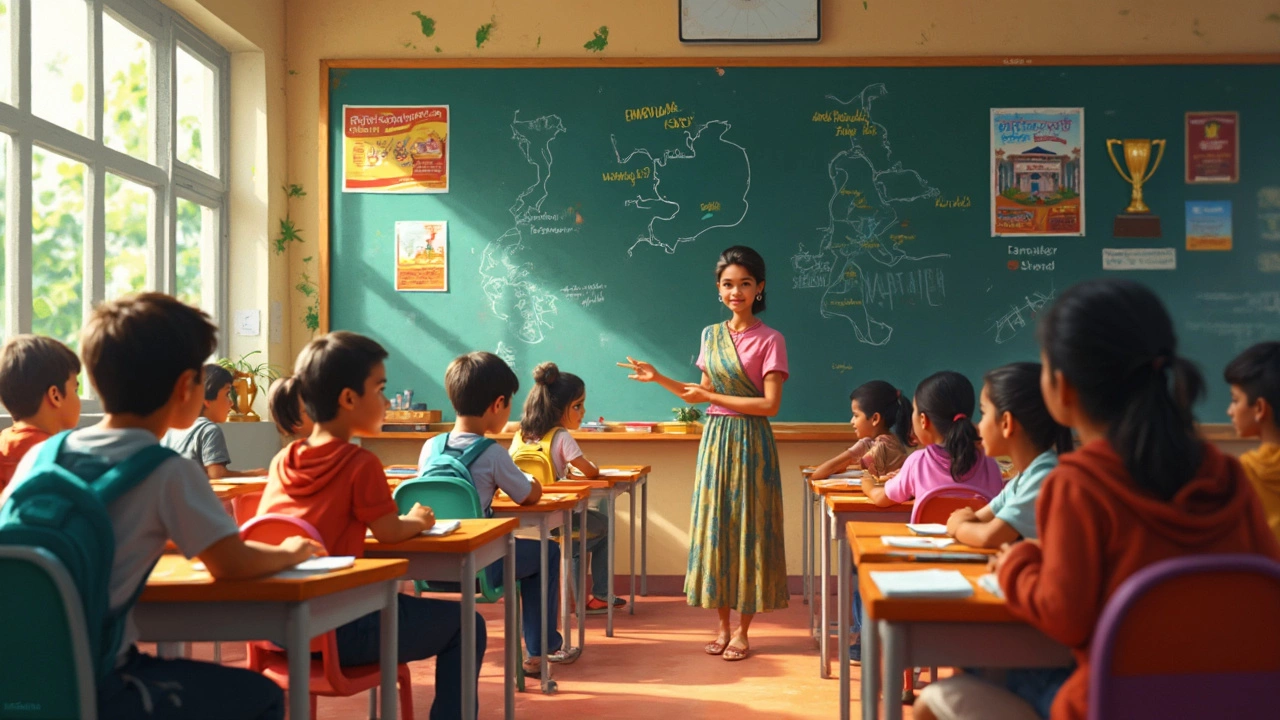

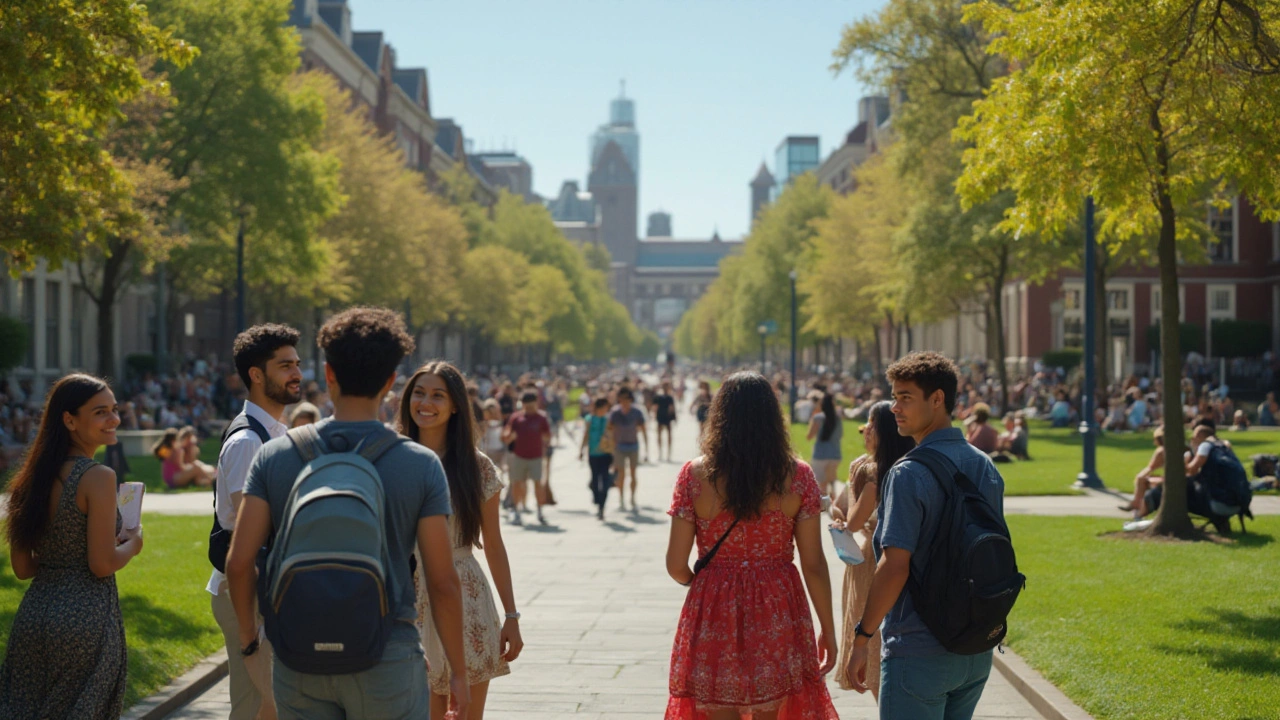
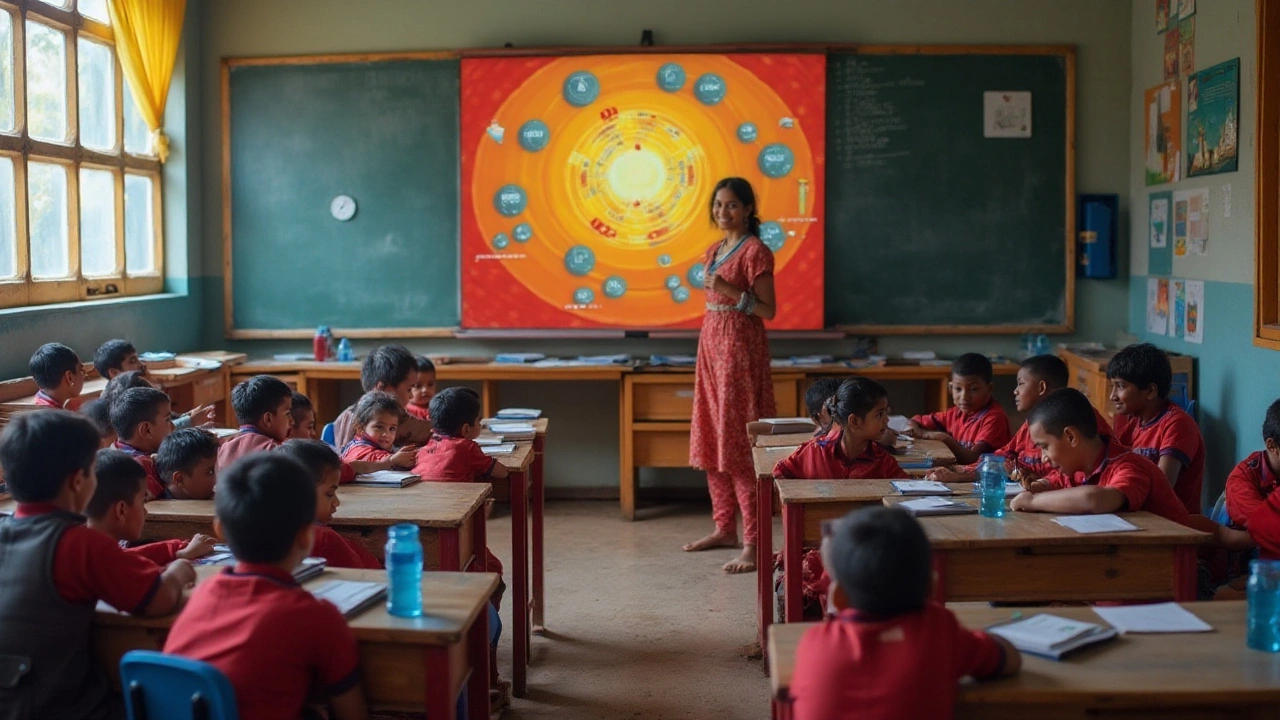

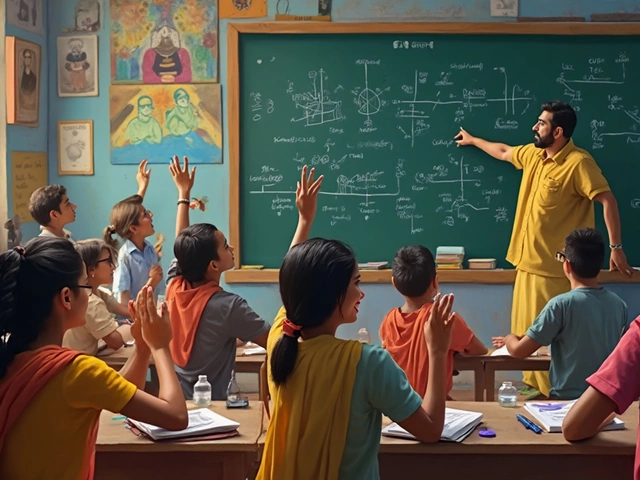


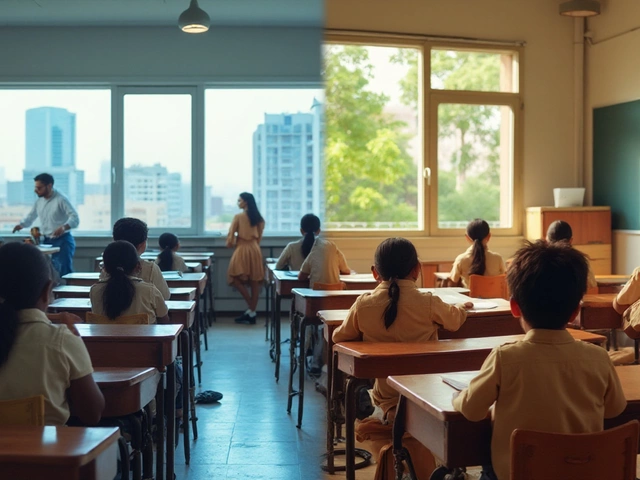
0 Comments